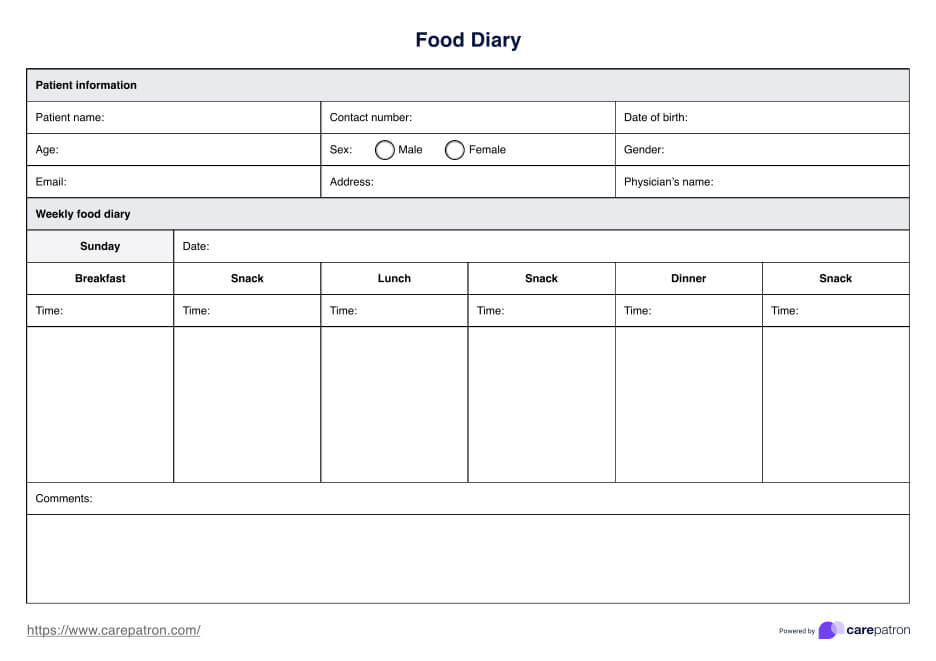Print out a copy of the Food Diary Template and fill in your daily meals and snacks. You can also make a digital copy and edit it on your computer or smartphone.

Food Diary Template
Download this free Food Diary Template to help you and your clients track what they eat daily and weekly.
Food Diary Template Template
Commonly asked questions
The results of your food diary will show you a clear picture of your daily food intake and eating habits. You can use this information to make healthier choices, identify trigger foods, and track your progress toward weight loss goals. It can also help you see where you may need to adjust your daily diet for optimal nutrition.
The Food Diary Template helps you keep track of your daily food intake and eating habits. It allows you to record what you eat, how much you eat, and any relevant notes, such as food allergies or intolerances. This information can be used to identify patterns in your diet and make necessary changes for a healthier lifestyle.
EHR and practice management software
Get started for free
*No credit card required
Free
$0/usd
Unlimited clients
Telehealth
1GB of storage
Client portal text
Automated billing and online payments











